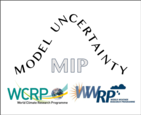Leverhulme Trust Research Project Team Meeting 2
Minutes
Wednesday 21 February, 2024
Present:
Hannah Christensen (University of Oxford)
Edward Groot (University of Oxford)
Hugo Lambert (University of Exeter)
Romain Roehrig (Météo-France)
Kasturi Singh (University of Exeter)
Keith Williams (UK Met Office)
Files:
EG update
- Running the IFS SCM
EG: The OpenIFS SCM CY48 was released in early January, though the first release contained bugs relating to radiation. A second version with bug fixes was released in February. This has now been installed in Oxford and on Jasmin
Dephy-to-IFS conversion scripts have been completed. Some variables are missing – e.g. TKE, albedo, and others. Can we agree on values?
RR: IFS parametrisation for albedo? Or can it be backed out from surface radiation budget from ICON?
HC: to check availability of upwelling and downwelling SW radiation at the surface
EG: TKE currently spinning up at start of simulation, exacerbated by lack of initialisation values
Current estimates are 6-8 GB per day (8 initial conditions) for the complete forcing files, including the duplicated information needed with forcing fields at later times
Next step is to install scm-tiles (https://github.com/aopp-pred/scmtiles) for parallelisation of SCM runs
- Tendency budget
EG: Tendency budget computed, to assess whether change in state of IFS is truly equal to the output “total tendency” T := sum of the dynamical and physical tendencies
Find a growing residual between the change in state and T with time. This can be substantial compared to the forecast change in variables with time. It shows particular spatial characteristics, and is large in the boundary layer. Some dependency on how the model is forced at the surface
RR: observed residuals are large. Could we consider that the dynamical tendencies are “less reliable” and derive the dynamics as the residual between the change in state and the physics tendency? Discussed mass conservation issues.
RR: surface flux forcing has noisier residuals – why? Shallow convection in BL, activated in surface flux forced case but not SST forced case?
EG, RR: Further discussion about surface budget, role of radiation and growth of the BL during the day
HC: Should the surface forcing flags be mutually exclusive? Can we work out by looking at the source code what the different flags do?
KS update
Met Office SCM now running on SPICE. However, only two SCM can run at any one time. Currently 3-hr simulations for 100 columns take 12 minutes to run, including compilation. Likely that, without compilation, it would be 5-7 minutes. This would mean months of wall clock time for the core runs. Focus will now be on reducing wall clock time, though there may be restrictions on number of concurrent jobs for any one user.
KW: Bulk of run time is in initialisation and finish, so 6-hour runs will not be twice as long
HL: Also thinking about future perturbed physics runs
HC update
Jasmin GWS application successful and set up as of today: “mu_mip”. Please apply for access. 40TB disk and 125TB tape granted as requested.
Website updated with photos and bios.
RR update
New MU-MIP researcher, Wahiba Lfarh, to start at Météo-France from next 1 March.
AOB
It was suggested we meet again, online, before school Easter vacation/ EGU/ Climate Informatics. KS to circulate a poll.
EG to visit Exeter, possibly 17-20 June. Co-ordination with KS/HL and Met Office staff
Action items
All – join JASMIN group workspace if desired
HC - check availability of upwelling and downwelling SW radiation at the surface in ICON simulation
KW/EG – plan Exeter visit, including checking availability of UK Met Office staff on 17 June
KS – poll for next meeting, w/c 25 March



